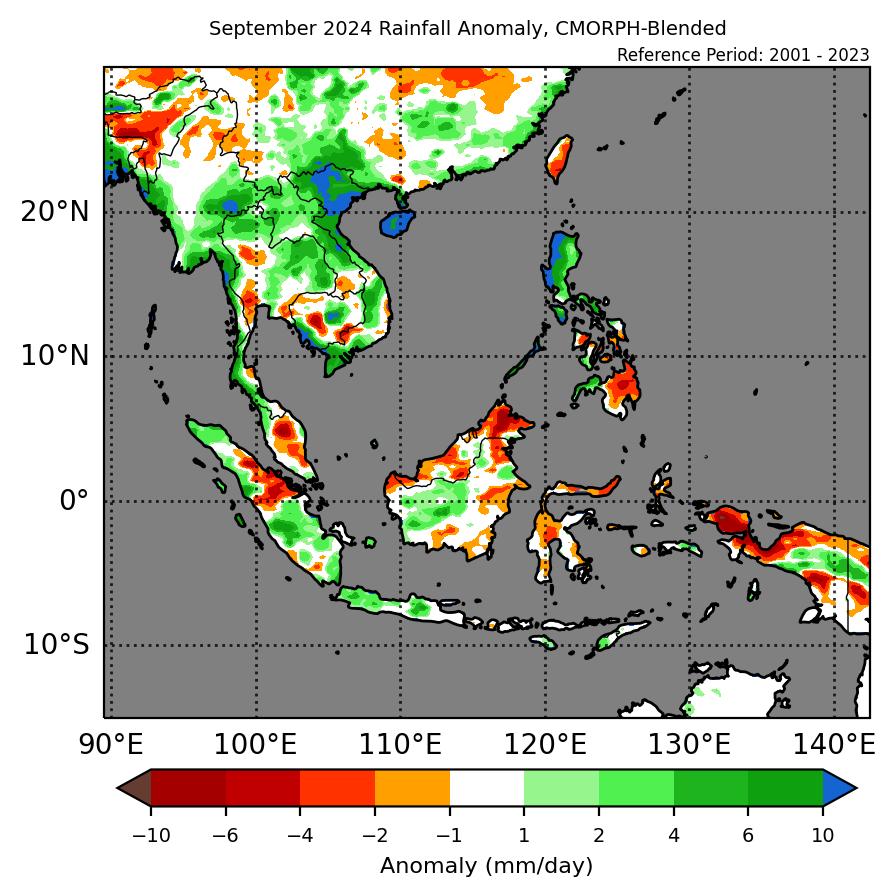Review of Regional Weather for September 2024
1. Overview
1.1 During September 2024, the Maritime Continent experienced a mix of below- and above-average rainfall, with much of Mainland Southeast Asia experiencing above-average rainfall . For the Maritime Continent, much of the eastern equatorial region experienced below-average rainfall while the northern Philippines and the southern Maritime Continent experienced above-average rainfall (Figure 1). Above-average rainfall was recorded over much of northern and eastern Mainland Southeast Asia, although there was disagreement over the southern parts of Mainland Southeast Asia with GSMaP-NRT (Figure 1, left) recording near- to above-average rainfall, while CMORPH-Blended (Figure 1, right) recorded a mix of below- and above-average rainfall. The largest negative (drier) anomalies were recorded over Papua, southern Philippines and northeast Borneo in GSMap-NRT (Figure 1, left) and CMORPH-Blended (Figure 1, right). The larger positive (wetter) anomalies were recorded over northern Viet Nam and northern Philippines (in both GSMap-NRT and CMORPH-Blended), partly associated with Typhoon Yagi in early September.
1.2 The observed rainfall anomaly pattern of above-average rainfall over much of the northern ASEAN region and a mix of below- and above-average rainfall is consistent with the predictions from the subseasonal weather outlooks for September 2024 (2 – 15 September 2024 and 16 – 29 September 2024).
1.3 Above-average temperatures were recorded over the much of ASEAN region in September 2024 (Figure 2). The warmest anomalies (more than 1°C above average) were recorded over northern Myanmar, southern Sumatra, Sulawesi and parts of Borneo, based on ERA-5 reanalysis.
2. Climate Drivers
2.1 The Madden-Julian Oscillation (MJO) was active during much of September 2024, based on the RMM index (Figure 3). For much of the first half of September, an MJO signal propagated eastwards through the Maritime Continent (Phases 4 and 5). In the third week of the month, the signal was active over the Western Pacific (Phases 6 and 7), before propagating eastwards through the Western Hemisphere (Phases 8 and 1) during the last week of the month. For September, Phases 4 to 5 tend to bring wetter conditions to parts of southern Mainland Southeast Asia and the Philippines (in line with Figure 1), while Phases 8 and 1 tend to bring drier conditions to these regions.
2.2 The tropical Pacific was in an ENSO neutral state during September.





